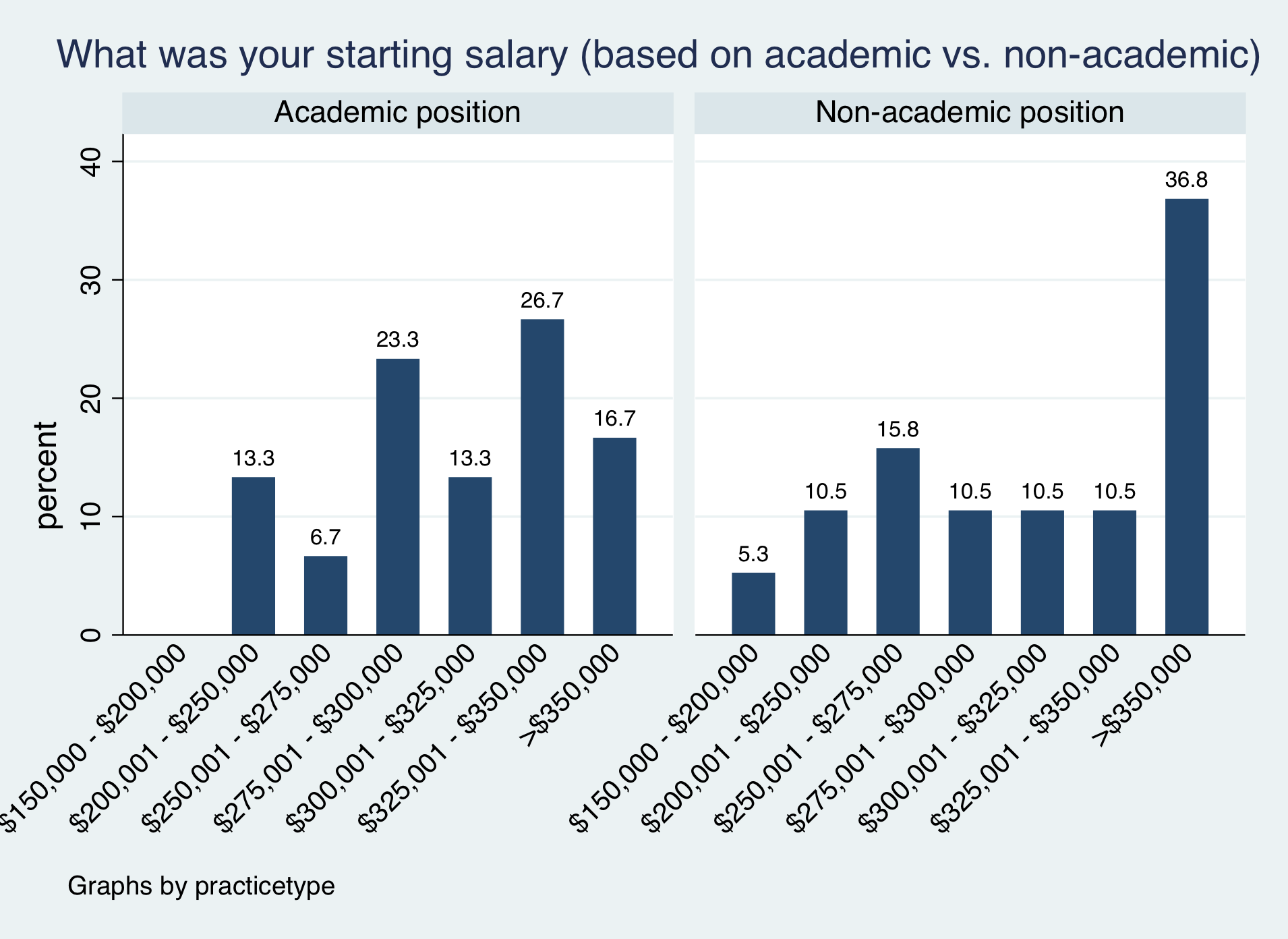In Uncharted Waters: Navigating The Pediatric Urology Job Market
Bryan S. Sack, MD1, Elizabeth B. Yerkes, MD2, Jason Van Batavia, MD3.
1Boston Children's Hospital, Boston, MA, USA, 2Ann & Robert H. Lurie Children's Hospital, Chicago, IL, USA, 3Children's Hospital of Philadelphia, Philadelphia, PA, USA.
BACKGROUND: Pediatric Urology fellows have had the comfort of a matching process for residency and fellowship. The task of navigating the job market successfully is unfamiliar and without resources. This led us to design a survey to provide insight into this process. METHODS: A REDCap survey was designed to understand how current fellows and 2012-2017 graduates obtained a position. Three emails were sent over the course of a 6-week period. Results were evaluated using STATA (version 14.2, College Station, TX, USA). RESULTS: 153 participants were emailed and 94 (61%) completed the survey. A 50% and 86% response rate was obtained for graduated and current fellows, respectively. The majority (44%) began the search at the Spring AUA meeting, 14 months before finishing. Of those who started 14 months before finishing, 33% wished they started earlier and 61% would have started at the same point. Of those who started 10 months prior to finishing, 58% wish they started earlier. The mean number of programs contacted was 3-4 and the median number of programs formally visited was two. Similarly, the median number of offers received was two. After the offer, the majority (40%) had >8 weeks to make a decision. Less than half (38.5%) hired an attorney for contract negotiation. Of those who did not, only 3% wish that they had. Conversely, of those who did hire an attorney, only 68% believed it provided benefit. When asked about what aspects of the contract were negotiated, 22% negotiated for nothing and 35% negotiated for salary. 28% of those who took academic jobs thought negotiating for protected research/educational time was most important compared to only 4% of those who took non-academic jobs. Over half of responders reported a starting salary >$300,000. Starting salary did appear to differ based on type of job (academic vs. non-academic) (Figure 1). Slightly more than half of responders received a signing bonus (57%). The majority (37%) finalized their contract "6-9 months prior to finishing fellowship." When asked how they learned about the job they accepted: 28% were contacted by the program, 25% cold called the program, 20% accepted where they did fellowship, 10% accepted where they did residency, and 18% learned through the SPU or AUA websites. The majority (50%) thought the number of desirable positions during the process were as they expected. 41% however thought the number of desirable positions were expectedly or surprisingly low. Regarding quality of life and satisfaction with job/career choice (Figure 2), 98% stated that they would still choose to sub-specialize in pediatric urology. CONCLUSIONS: The survey results objectively provide guidance to current and future fellows on how and what to expect as they enter into the unchartered waters of the pediatric urology job market.

Back to 2017 Program
